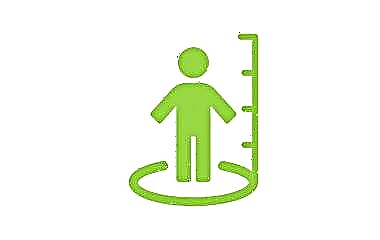An increase in body temperature in a child, even to the minimum values above the norm, is perceived by many parents as a serious pathological condition of their children. We have to figure out what indicators are called the norm. Determine whether an increase in body temperature to subfebrile numbers is considered normal, or does it still indicate the presence of pathology, and also identify in which cases it is necessary to seek qualified medical help.
Physiological aspects
Thermoregulation is a process not only of the formation or release of heat, but also the maintenance of a certain body temperature for adequate life support of the body. In a fetus in the womb, thermoregulatory mechanisms are not developed, since a certain temperature of its body is maintained by the flow of already heated blood of matter through the placenta. After the birth of a child, his temperature fluctuates between 37.3 - 38.2 ° C. These indicators strongly depend on the ambient air temperature, from frequent swaddling, from the crying of the baby.
Although it must be remembered that newborns are also characterized by the so-called transient hypothermia (due to a decrease in the volume of "maternal" hormones that stimulate heat production).
Note that the body temperature of newborns is 37 ° - 37.5 ° C, due to the presence of a powerful heat insulator - brown fat, the reserves of which are significantly reduced by the age of 3-4 weeks, as well as strong vascularization of the skin, which has a relatively large surface, compared to the surface of adults. The imperfection of the thermoregulatory centers in the hypothalamus is also important (it matures by 3-4 months of life) and the non-functioning of the sweat glands (it is also fully activated in the first year of life), and in addition, the presence of physiological muscle hypertonicity (slowing down of redox processes).
In older children, a 37 ° thermometer can be at intense physical exertion, after a heavy meal, after a long stay in a warm room and with dry air.
The main causes of subfebrile condition
Let's start with the fact that normally heat production should correspond to the heat transfer of the body. In pathological processes, for example, in infectious diseases, heat transfer is disturbed due to narrowing of the capillaries, a decrease in sweating, an increase in muscle tone, an increase in the "setting temperature point" in the brain (hypothalamus).
Pathological causes of subfebrile condition:
- Acute infectious diseases (mainly respiratory);
- Teething syndrome (in infants and young children);
- Chronic, mostly viral infections;
- Endocrine system diseases;
- Helminthiasis and parasitosis;
- Allergic reactions;
- Oncology.

An increase in body temperature during infections is mainly due to the microorganisms themselves. As a result of their vital activity, many bacteria release exotoxins into the human blood or leave endotoxins. As a result of intoxication of the body, an increase in body temperature is observed in response.
In endocrine pathology, the cause is the hyperproduction of hormones that stimulate heat production by the thermoregulation center of the hypothalamus. Thyroid hormones play a key role.
With teething, a weakening of local immunity (in the oral cavity) is noted, which can explain the easy attachment of a secondary infection, in which the oral mucosa becomes the entrance gate.
With oncological pathologies, tissue decay is noted, which leads to toxemia, that is, "slagging" of the blood, which also leads to an increase in body temperature.
Summarizing the above, we note that where there is inflammation, there is one of its signs - an increase in temperature.
Associated signs
The clinical picture can be absolutely varied and depends on the reasons due to which there is an increase in body temperature. In case of infectious lesions, in addition to the intoxication syndrome, catarrhal syndrome (cough, pain and sore throat, nasal congestion) and respiratory symptoms (pain and burning sensation in the chest area, wet cough) may also be present. If a child's teeth are erupting, then additional pain, redness and swelling of the gums are noted.
In addition to the above, a decrease in appetite is possible, or vice versa - an increase, lethargy, drowsiness, or irritability and aggressiveness (especially characteristic of endocrine patients). Often, a fever is the only sign of the disease for 1 - 2 days, and then a cough, sore throat joins, the body temperature can rise to febrile values. In any case, if the parents noticed unusual behavior of the child, changes in food addictions to the "temperature changes", then they should definitely consult a doctor.

Diagnostics
The formulation of the correct diagnosis and, accordingly, the correct treatment (if required) mainly depends on the diagnostic procedures carried out in full and in the required volume. The appearance of the child most often does not carry any information: the face may be slightly puffy, mucous discharge from the nose may be present, and when examining the neck, an increase in the thyroid gland is occasionally noted. With acute respiratory diseases, lethargy, weakness are present, the child complains of headaches.
If an increase in body temperature is noted for several days or weeks, then tests are prescribed to detect a latent infection. The list of tests includes a clinical blood test with disclosure of leukoformula, general urine analysis, feces for eggs of worms and lamblia cysts, biochemical blood test. If there is a suspicion of respiratory lesions, then an X-ray of the chest organs in frontal and lateral projections is additionally prescribed. Also, with poorly informative test results, they are sent to ECG, ultrasound of the abdominal organs. If a child often suffers from acute respiratory infections, otitis media, then it makes sense to direct them to latent infections: Epstein Barr viruses, cytomegalovirus and herpes viruses. If the latter is identified, it is necessary to contact an infectious disease specialist.
This is a mandatory consultation of an endocrinologist and a parasitologist, if the corresponding diseases are identified.

Conclusion
Any increase in the child's body temperature implies close observation and appeal to the pediatrician, first of all. Only a doctor will be able to correctly guide and determine the method for identifying the cause and prescribe the appropriate therapeutic measures.



